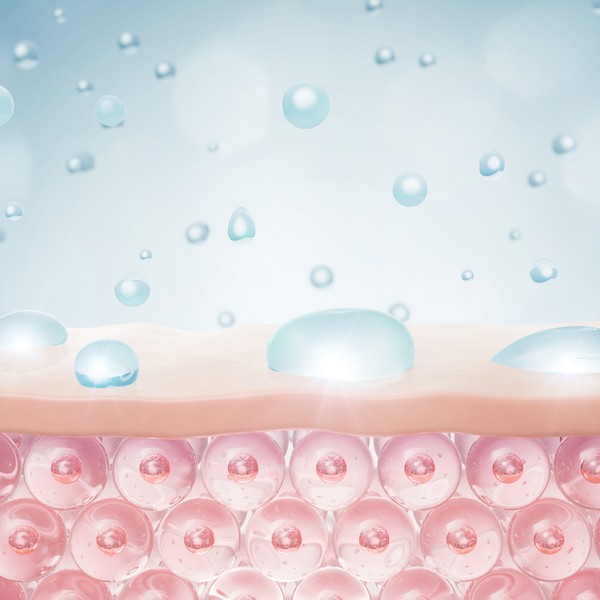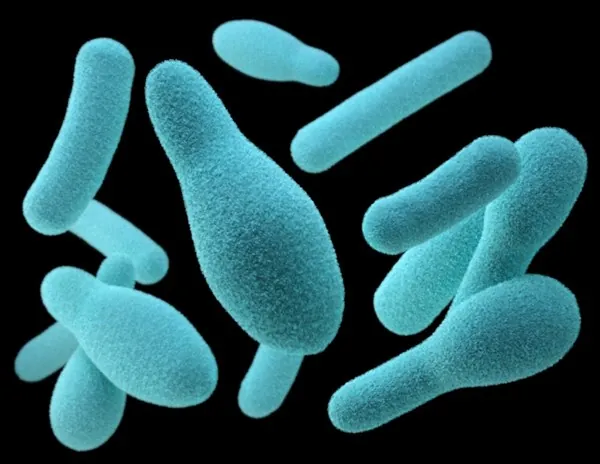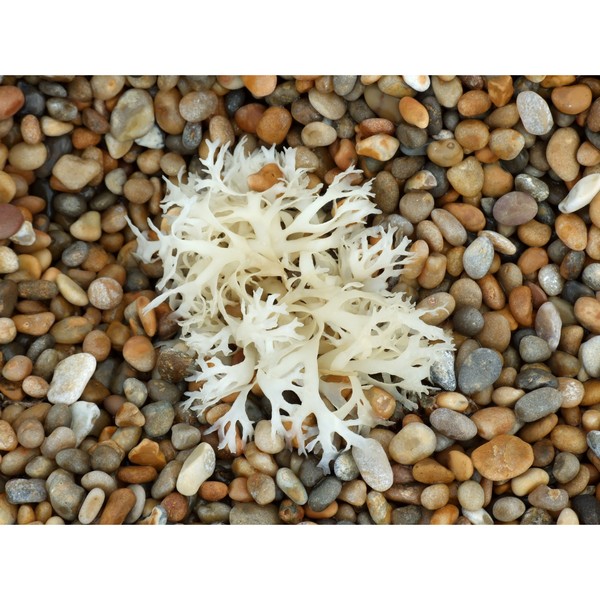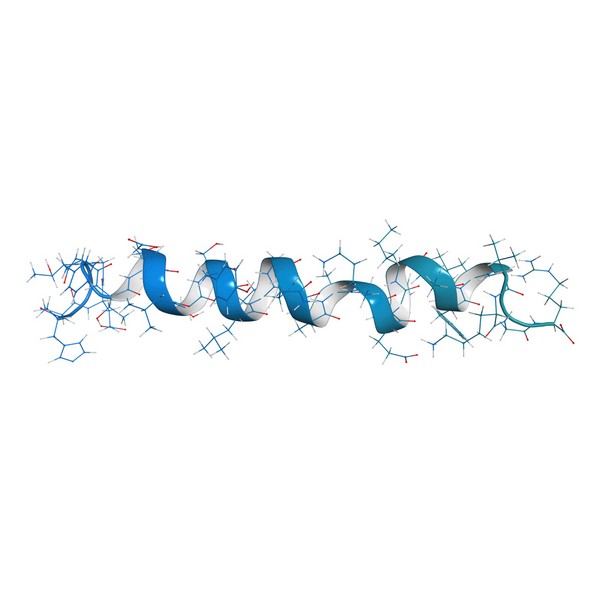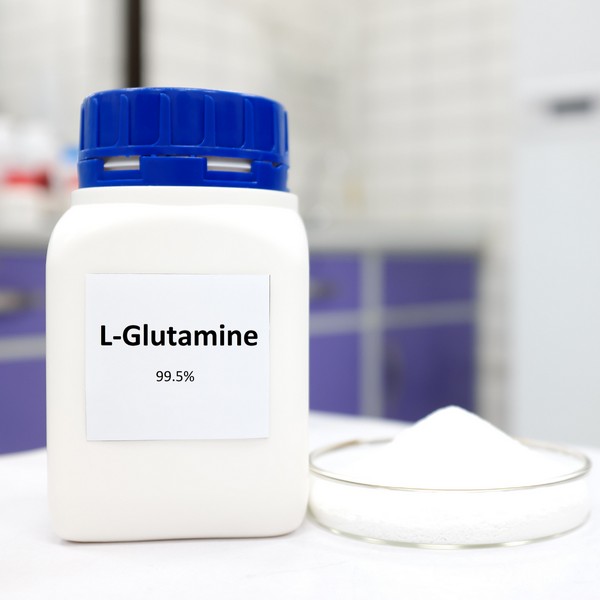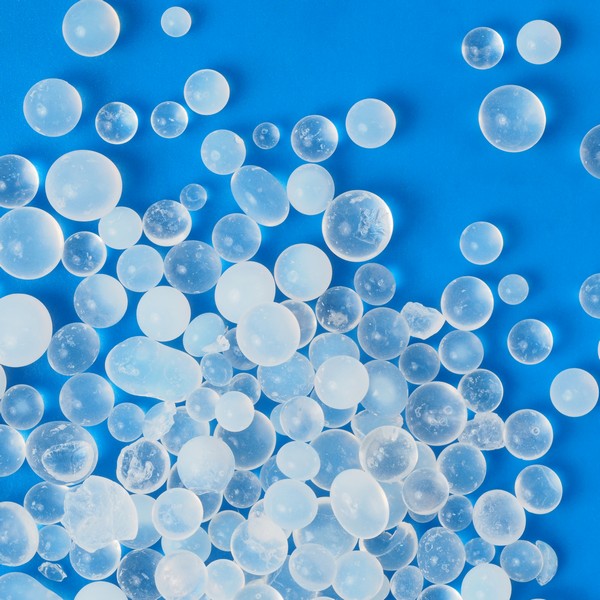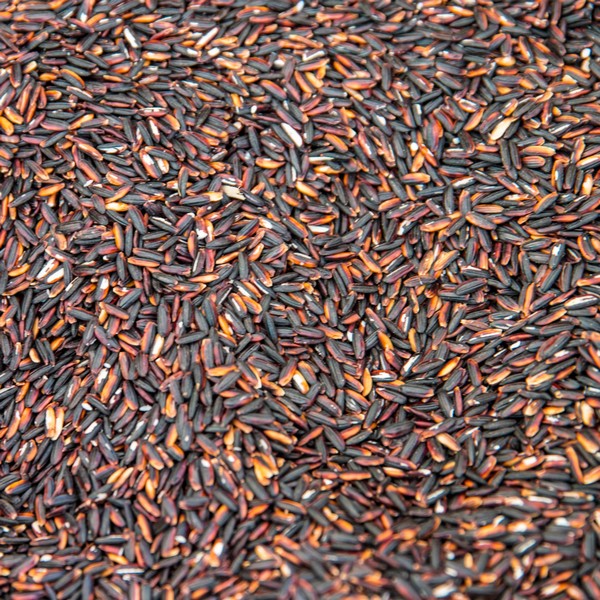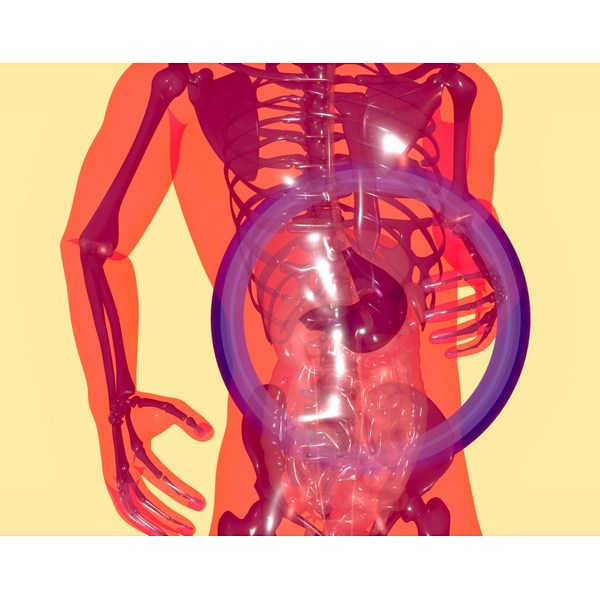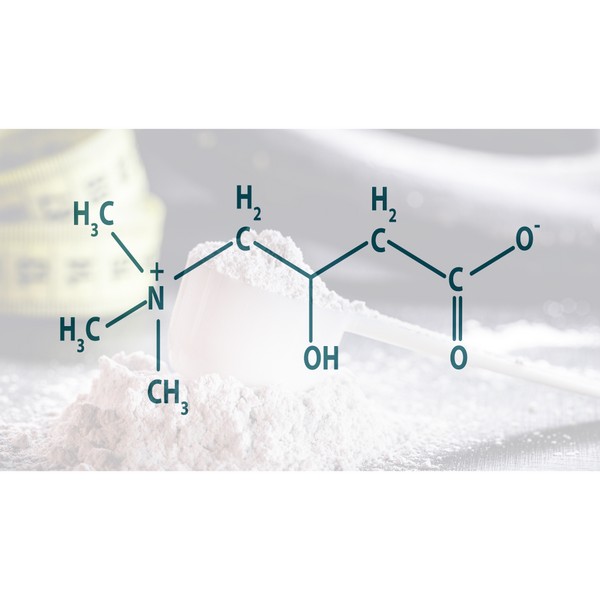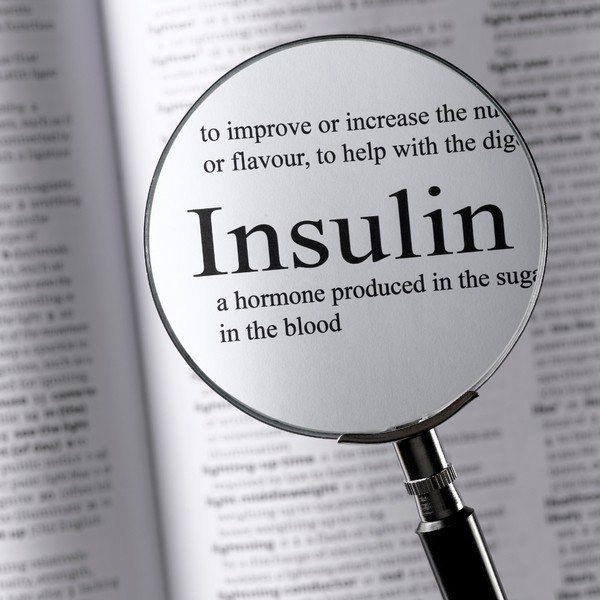Key Takeaways
- Fluoride is widely used in dental products and water supplies, but its safety is debated.
- Overexposure to fluoride can lead to conditions like dental and skeletal fluorosis.
- Fluoride may negatively impact thyroid function and cognitive development.
- Public concern over fluoride has led to increased scrutiny and calls for reducing exposure.
- Understanding how to reduce fluoride intake is important for protecting your health.
Introduction
Fluoride is commonly added to dental products and public water supplies, with the intent of preventing tooth decay.
The marketing spin behind its usage is very effective. More likely than not the majority public opinion is that fluoride is spectacularly healthy.
However, growing evidence suggests that fluoride may pose significant health risks, particularly when consumed in excess.

What is Fluoride?
Fluoride is a mineral found naturally in various amounts in soil, water, and foods.
It is also added to many dental products, such as toothpaste and mouthwash, and is commonly introduced into public water supplies through a process known as water fluoridation.
The fluoride in your drinking water and toothpaste is an industrial waste byproduct.
Health Risks Associated with Fluoride
Thyroid Function
Fluoride has been shown to potentially interfere with thyroid function, particularly in areas where iodine deficiency is common.
Excessive fluoride intake can suppress thyroid activity, leading to hypothyroidism, a condition characterized by fatigue, weight gain, and depression.
This impact on the thyroid raises concerns about the broader effects of fluoride on hormonal balance and metabolic health.
Neurological Concerns
Recent studies have raised alarms about the potential neurological effects of fluoride, especially in children.
Some research suggests a correlation between high fluoride exposure and reduced IQ levels or other cognitive impairments.
These findings have sparked debate and concern over the safety of fluoride in drinking water, particularly for pregnant women and young children.
Pineal Gland
Fluoride can accumulate in the pineal gland over time. The pineal gland, located in the brain, regulates sleep-wake cycles by producing melatonin.
Studies suggest fluoride deposits in the pineal gland as calcium fluoride, which may reduce its ability to function properly.
High fluoride levels in the pineal gland can potentially disrupt melatonin production. This disruption might affect sleep patterns and timing of puberty, as melatonin plays a key role in both.
Research indicates children in high-fluoride areas may experience earlier puberty, possibly linked to this gland’s impaired function.
Dental Fluorosis
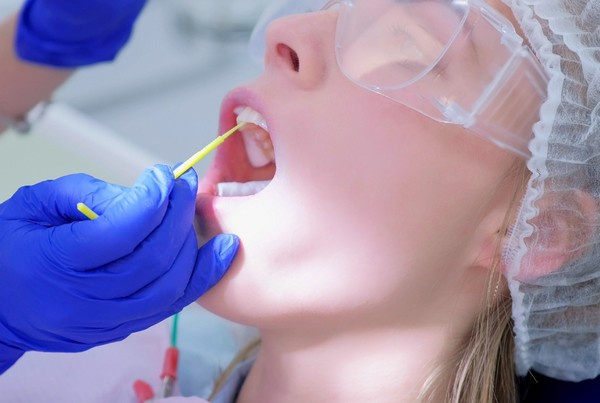
One of the most visible effects of excessive fluoride consumption is dental fluorosis, a condition that affects the appearance and health of teeth.
It occurs when too much fluoride is ingested during the early years of life, leading to white spots, streaks, or even brown stains on the teeth.
While often considered a cosmetic issue, severe cases can weaken the enamel and make teeth more prone to decay.
Skeletal Fluorosis
Skeletal fluorosis is a more severe condition that arises from long-term exposure to high levels of fluoride.
It affects the bones and joints, leading to pain, stiffness, and, in extreme cases, changes in bone structure that can cause crippling deformities.
This condition is more common in regions where water naturally contains high levels of fluoride.
Fluoride in Drinking Water
Water Fluoridation
The practice of adding fluoride to drinking water began in the mid-20th century, with the goal of reducing tooth decay in the population.
However, this practice has become increasingly controversial as more research emerges about fluoride’s potential risks.
Critics argue that mass fluoridation does not account for individual differences in fluoride consumption and can lead to overexposure.
Global Perspective
Fluoride use and regulation vary significantly across the globe. Some countries have banned or reduced the use of fluoride in drinking water due to health concerns, while others continue to advocate for its use.
Understanding these global differences is essential for evaluating the risks and benefits of fluoride.
Reducing Fluoride Exposure
Dietary and Environmental Sources

Fluoride is present in many foods and beverages, including tea, fish, and processed foods.
To reduce fluoride intake, it is important to be mindful of these sources and consider choosing products with lower fluoride content.
Additionally, understanding how to minimize environmental exposure, such as using fluoride-free dental products, can help limit overall intake.
Iodine
High-iodine foods can help counteract the dangers of fluoride by supporting thyroid function and detoxification.
When iodine levels are adequate, the thyroid is better equipped to resist fluoride’s harmful effects.
Iodine also supports the pineal gland by aiding in the removal of toxic substances, including fluoride.
It promotes the body’s natural detox processes, helping to flush out accumulated fluoride through urine and sweat.
Foods rich in iodine, such as seaweed, cod, shrimp, and pasture-raised eggs, can help restore iodine levels.
Proper iodine intake ensures optimal thyroid and glandular function, protecting against potential disruptions caused by fluoride exposure.
Removing fluoride exposure plus high-iodine foods may reduce risks to both the thyroid and the pineal gland while improving overall endocrine health.
The National Institutes of Health (NIH) recommends a daily iodine intake of 150 micrograms for adults, 220 micrograms for pregnant women, and 290 micrograms for breastfeeding women.
Water Filtration

For those concerned about fluoride in drinking water, several water filtration systems are available that can effectively remove fluoride.
Reverse osmosis filters and activated alumina filters are two common methods.
Investing in a good filtration system can be a practical step toward reducing fluoride exposure in your daily life.
Recent Research and Future Directions
Recent studies continue to explore the various health impacts of fluoride, particularly its effects on the brain, bones, and endocrine system.
As public awareness grows, there is an increasing push for more comprehensive research and potential policy changes.
Future research will likely focus on better understanding the long-term effects of fluoride exposure and identifying safer alternatives.
Controversies Surrounding Fluoride

Scientific Debate
The scientific community remains divided on the issue of fluoride. While some experts continue to support fluoride use for dental health, others point to the growing body of evidence suggesting that fluoride may do more harm than good.
This debate highlights the need for more research and a reevaluation of current public health policies regarding fluoride.
Public Opinion
Public concern over fluoride has been increasing, with many advocating for reduced exposure and greater transparency about the risks.
Movements to remove fluoride from public water supplies have gained momentum in various regions, reflecting the growing demand for safer, more natural alternatives.
Conclusion
Fluoride, once widely accepted as beneficial for dental health, is now under scrutiny for its potential risks. Understanding the possible dangers associated with fluoride exposure is essential for making informed decisions about your health. Reducing fluoride intake, especially from drinking water and dental products, can help protect against its negative effects.
FAQ
How can I tell if my drinking water contains fluoride?
Check your local water quality report or contact your water provider. Most public water systems disclose whether they add fluoride.
What are the signs of fluoride overexposure?
Signs include dental fluorosis, bone pain, stiffness, and potential thyroid issues. If you suspect overexposure, consult a healthcare professional.
Can fluoride in toothpaste be harmful if swallowed?
Swallowing small amounts of toothpaste occasionally is generally not harmful, but consistent ingestion, especially in children, can lead to fluorosis. Always use a pea-sized amount of toothpaste and encourage spitting.
Are there safe alternatives to fluoride for dental care?
Yes, options like hydroxyapatite toothpaste, xylitol, and oil pulling can support dental health without fluoride.
Should I be concerned about fluoride in bottled water?
Some bottled waters contain added fluoride, while others do not. Always check the label to make an informed choice.
Research
Aardema MJ, Gibson DP, LeBoeuf RA. Sodium fluoride-induced chromosome aberrations in different stages of the cell cycle: a proposed mechanism. Mutat Res. 1989 Jun;223(2):191-203.
Agency for Toxic Substances and Disease Registry (ATSDR) (1993). Toxicological Profile for Fluorides, Hydrogen Fluoride, and Fluorine (F). U.S. Department of Health & Human Services, Public Health Service. ATSDR/TP-91/17.
Allolio B, Lehmann R. Drinking water fluoridation and Exp Clin Endocrinol Diabetes. 1999;107(1):12-20.
Angelillo IF, Torre I, Nobile CG, Villari P. Caries and fluorosis prevalence in communities with different concentrations of fluoride in the water. Caries Res. 1999;33(2):114-22.
Aoba T, Fejerskov O. Dental fluorosis: chemistry and biology. Crit Rev Oral Biol Med. 2002;13(2):155-70. doi: 10.1177/154411130201300206. PMID: 12097358.
Aravind A, Dhanya RS, Narayan Ajay, Sam George, Adarsh VJ, Kiran M. Effect of fluoridated water on intelligence in 10-12-year-old school children. Journal of International Society of Preventive and Community Dentistry 6(Suppl 3)
S237-S242, December 2016.
Armstrong WD, Singer L, Makowski EL. Placental transfer of fluoride and calcium. Am J Obstet Gynecol. 1970 Jun 1;107(3):432-4.
Attwood D, Blinkhorn AS. Dental health in school children 5 years after water fluoridation ceased in south-west Scotland. Dent J. 1991 Feb;41(1):43-8.
Barnes GP, Ethnicity, Location, Age, and Fluoridation Factors in Baby Bottle Tooth Decay and Caries Prevalence of Head Start Children. Public Health Reports; 107: 167-73, 1992.
Balabolkin MI, Mikhailets ND, Lobovskaia RN, Chernousova NV. [The interrelationship of the thyroid and immune statuses of workers with long-term fluorine exposure]. Ter Arkh. 1995;67(1):41-2.
Bayley TA, et al. Fluoride-induced fractures: relation to osteogenic effect. J Bone Miner Res. 1990 Mar;5 Suppl 1
Bronckers A, Lyaruu D, DenBesten P. The impact of fluoride on ameloblasts and the mechanisms of enamel fluorosis. Journal of Dental Research, 88(10), 877.
Bratthall D, Hansel Petersson G, Sundberg H. Reasons for the caries decline. What do the experts believe? Euro J Oral Sci. 1996;104:416-422.
Brunelle JA, Carlos JP. Recent trends in dental caries in U.S. children and the effect of water fluoridation. J Dent Res. 1990 Feb;69 Spec No:723-7; discussion 820-3.
Burt BA, Keels MA, Heller KE. The effects of a break in water fluoridation on the development of dental caries and fluorosis. J Dent Res. 2000 Feb;79(2):761-9.
Buzalaf MA, et al. Fluoride content of infant formulas prepared with deionized, bottled mineral and fluoridated drinking water. ASDC J Dent Child. 2001;68(1):37-41.
Campagna L, Tsamtsouris A, Kavadia K. Fluoridated drinking water and maturation of permanent teeth at age 12. J Clin Pediatr Dent. 1995 Spring;19(3):225-8.
Caverzasio J, Palmer G, Suzuki A, Bonjour JP. Mechanism of the mitogenic effect of fluoride on osteoblast-like cells: evidences for a G protein-dependent tyrosine phosphorylation process. J Bone Miner Res. 1997 Dec;12(12):1975-83.
CDC. Achievements in Public Health, 1900-1999: Fluoridation of drinking water to prevent dental caries. Mortality and Morbidity Weekly Review (MMWR). 1999;48(41):933-940.
CDC. Recommendations for using fluoride to prevent and control dental caries in the United States. Mortality and Morbidity Weekly Review. 2001;50(RR14):1-42.
Chilvers C. Cancer mortality and fluoridation of water supplies in 35 USA cities. Int J Epidemiol. 1983;12(4):397-404.
Clark DC. Appropriate use of fluorides in the 1990's. J Can Dent Assoc. 1993 Mar;59(3):272-9.
Clark DC, et al. Influence of exposure to various fluoride technologies on the prevalence of dental fluorosis. Community Dent Oral Epidemiol. 1994;22(6):461-4.
Cohn PD. An Epidemiologic Report on Drinking Water and Fluoridation. New Jersey Department of Health, Trenton, NJ. 1992.
Comparison of fluoridated and non-fluoridated communities. Brunelle JA, Carlos JP. Recent trends in dental caries in U.S. children and the effect of water fluoridation. J Dent Res. 1990 Feb;69 Spec No:723-7; discussion 820-3.
Cooper C, Wickham CA, Barker DJ, Jacobsen SJ. Water fluoridation and hip fracture. JAMA. 1991 Jul 24-31;266(4):513-4.
Cooper C, Wickham C, et al. Water fluoride concentration and fracture of the proximal femur. J Epidemiol Community Health. 1990;44:17-19.
Danielson C, Lyon JL, Egger M, Goodenough GK. Hip fractures and fluoridation in Utah's elderly population. JAMA. 1992 Aug 12;268(6):746-8.
DenBesten, P. and Li, W., 2011. Chronic Fluoride Toxicity: Dental Fluorosis. Fluoride and the Oral Environment, [online] pp.81–96.
https://doi.org/10.1159/000327028.
Department of Health and Human Services. Review of fluoride benefits and risks. 1991. Appendix H. H1-H6.
Diesendorf M. The mystery of declining tooth decay. Nature. 1986;322:125-129.
Doll R, Kinlen L. Fluoridation of water and cancer mortality in the U.S.A. Lancet. 1977;1(Jun):1300-1302.
Doll R, Kinlen L. Fluoridation of water and cancer mortality in the U.S.A. Lancet. 1977;1(Jun):1300-1302.
Erickson JD. Down Syndrome, Water Fluoridation, and Maternal Age. Teratology. 1980;21(177-180).
Erickson JD. Fluoridation and Down Syndrome. J Dent Res. 58a 1979;228.
Everett, E. Fluoride’s Effects on the Formation of Teeth and Bones, and the Influence of Genetics. Journal of Dental Research, 90(5), 552.
https://doi.org/10.1177/0022034510384626
Feskanich D, Owusu W, Hunter DJ, Willett W, Ascherio A, Spiegelman D, Morris S, Spate VL, Colditz G. Use of toenail fluoride levels as an indicator for the risk of hip and forearm fractures in women. Epidemiology. 1998 Jul;9(4):412-6.
Finkelstein MM. Radium in drinking water and the risk of death from bone cancer among Ontario youths. CMAJ. 1994 Sep 1;151(5):565-71.
Fomon SJ, Ekstrand J, Ziegler EE. Fluoride intake and prevalence of dental fluorosis: trends in fluoride intake with special attention to infants. J Public Health Dent. 2000;60(3):131-9.
Freni SC. Exposure to high fluoride concentrations in drinking water is associated with decreased birth rates. J Toxicology and Environmental Health. 1994;42:109-121.
Galanti MR, Sparen P, Karlsson A, Grimelius L, Ekbom A. Is residence in areas of endemic goiter a risk factor for thyroid cancer? Int J Cancer. 1995 May 29;61(5):615-21.
Galletti PM, Joyet G. Effect of fluoride on thyroidal iodine metabolism in hyperthyroidism. J Clin Endocrinol. 18:1102-1110 (1958).
Gedalia I, Brand N. The relationship of fluoride and iodine in drinking water in the occurrence of goiter. Arch Int Pharmacodyn. 1963;142:312-5.
Grandjean P, Olsen JH, Jensen OM, Juel K. Cancer incidence and mortality in workers exposed to fluoride. J Natl Cancer Inst. 1992 Dec 16;84(24):1903-9.
Griffith GW. Fluoridation and Cancer Mortality in Anglesey Wales Uk. J Epidemiol Community Health. 1985;39(3):224-226.
Gutierrez J, Liebana J, Ruiz M, Castillo A, Gomez JL. Action of sodium fluoride on phagocytosis by systemic polymorphonuclear leucocytes. J Dent. 1994 Oct;22(5):279-82.
Haddow JE, Palomaki GE, Allan WC, et al. Maternal thyroid deficiency during pregnancy and subsequent neuropsychological development of the child. N Engl J Med. 1999;341:549-55.
Haugejorden O. Using the DMF gender difference to assess the "major" role of fluoride toothpastes in the caries decline in industrialized countries: a meta-analysis. Community Dent Oral Epidemiol. 1996;24(6):369-75.
Hazan S. Letter to Florida Department of Health from Stan Hazan, General Manager, Drinking Water Additives Certification Program, National Sanitation Foundation International. 2000 Apr 24.
Heller KE, Eklund SA, Burt BA. Dental caries and dental fluorosis at varying water fluoride concentrations. J Public Health Dent. 1997;57(3):136-143.
Hillier S, Cooper C, Kellingray S, Russell G, Hughes H, Coggon D. Fluoride in drinking water and risk of hip fracture in the UK: a case-control study. Lancet. 2000 Jan 22;355(9200):265-9.
Hillier S, Inskip H, Coggon D, Cooper C. Water fluoridation and osteoporotic fracture. Community Dent Health Suppl. 1996;2:63-8.
Hoover RN, McKay FW, Fraumeni JF Jr. Fluoridated drinking water and the occurrence of cancer. J Natl Cancer Inst. 1976;57(4):757-768.
Hoover RN. Fluoridation of Drinking Water and Subsequent Cancer Incidence and Mortality. In Review of Fluoride: Benefits and Risks. US Public Health Service, pp. E1-E51.
Hu YH, Wu SS. Fluoride in cerebrospinal fluid of patients with fluorosis. J Neurol Neurosurg Psychiatry. 1988 Dec;51(12):1591-3.
Ismail AI, Shoveller J, Langille D, MacInnis WA, McNally M. Should the drinking water of Truro, Nova Scotia, be fluoridated? Water fluoridation in the 1990s. Community Dent Oral Epidemiol. 1993 Jun;21(3):118-25.
Iamandii, I., De Pasquale, L., Giannone, M. E., Veneri, F., Generali, L., Consolo, U., Birnbaum, L. S., Castenmiller, J., Halldorsson, T. I., Filippini, T., & Vinceti, M. (2024). Does fluoride exposure affect thyroid function? A systematic review and dose-response meta-analysis. Environmental Research, 242, 117759.
https://doi.org/10.1016/j.envres.2023.117759
Jacobsen SJ, Goldberg J, Cooper C, Lockwood SA. The association between water fluoridation and hip fracture among white women and men aged 65 years and older: a national ecologic study. Ann Epidemiol. 1992 Sep;2(5):617-26.
Jacqmin-Gadda H, Commenges D, Dartigues JF. Fluorine concentration in drinking water and fractures in the elderly. JAMA. 1995 Mar 8;273(10):775-6.
Jackson RD, Kelly SA, Katz BP, Hull JR, Stookey GK. Dental fluorosis and caries prevalence in children residing in communities with different levels of fluoride in the water. J Public Health Dent. 1995 Spring;55(2):79-84.
Jackson RD, Kelly SA, Noblitt TW, Zhang W, Wilson ME, Dunipace AJ, Li Y, Katz BP, Brizendine EJ, Stookey GK. Lack of effect of long-term fluoride ingestion on blood chemistry and frequency of sister chromatid exchange in human lymphocytes. Environ Mol Mutagen. 1997;29(3):265-71.
Kalsbeek H, Kwant GW, Groeneveld A, Dirks OB, van Eck AA, Theuns HM. Caries experience of 15-year-old children in The Netherlands after discontinuation of water fluoridation. Caries Res. 1993;27(3):201-5.
Karagas MR, Baron JA, Barrett JA, Jacobsen SJ. Patterns of fracture among the United States elderly: geographic and fluoride effects. Ann Epidemiol. 1996 May;6(3):209-16.
Kay AR, Miles R, Wong RKS. Intracellular fluoride alters the kinetic properties of calcium currents facilitating the investigation of synaptic events in hippocampal neurons. J Neurosci. 1986;6:2915-2920.
Kinlen L, Doll R. Fluoridation of Water Supplies and Cancer Mortality 3. A Reexamination of Mortality in Cities in the USA. J Epidemiol Community Health. 1981;35(4):239-244.
Kobayashi S, Kawasaki K, Takagi O, Nakamura M, Fujii N, Shinzato M, Maki Y, Takaesu Y. Caries experience in subjects 18-22 years of age after 13 years' discontinued water fluoridation in Okinawa. Community Dent Oral Epidemiol. 1992 Apr;20(2):81-3.
Krishnamachari KA. Skeletal fluorosis in humans: a review of recent progress in the understanding of the disease. Prog Food Nutr Sci. 1986;10(3-4):279-314.
Kunzel VW. Cross-sectional comparison of the median eruption time for permanent teeth in children from fluoride poor and optimally fluoridated areas. Stomatol DDR. 1976 May;5:310-21.
Kunzel W, Fischer T. Caries prevalence after cessation of water fluoridation in La Salud, Cuba. Caries Res. 2000 Jan-Feb;34(1):20-5.
Kumar JV, Swango PA. Fluoride exposure and dental fluorosis in Newburgh and Kingston, New York: policy implications. Community Dent Oral Epidemiol. 1999 Jun;27(3):171-80.
Kumar JV, Swango PA, Lininger LL, Leske GS, Green EL, Haley VB. Changes in dental fluorosis and dental caries in Newburgh and Kingston, New York. Am J Public Health. 1998 Dec;88(12):1866-70.
Lalumandier JA, Rozier RG. The prevalence and risk factors of fluorosis among patients in a pediatric dental practice. Pediatr Dent. 1995 Jan-Feb;17(1):19-25.
Leverett D. Prevalence of dental fluorosis in fluoridated and nonfluoridated communities—a preliminary investigation. J Public Health Dent. 1986 Fall;46(4):184-7.
Levy SM, Eklund SA, Burt BA, Guire KE. Patterns of fluoride intake from birth to 36 months. J Public Health Dent. 2001;61(2):70-7.
Li Y, Liang CK, Slemenda CW, Ji RD, Sun SZ, Cao J, Emsley CL, Ma F, Wu Y. Effect of long-term exposure to fluoride in drinking water on risks of bone fractures. J Bone Miner Res. 2001;16(5):932-9.
Limeback H. A re-examination of the pre-eruptive and post-eruptive mechanism of the anti-caries effects of fluoride: is there any anti-caries benefit from swallowing fluoride? Community Dent Oral Epidemiol. 1999 Feb;27(1):62-71.
Liu, Y., Téllez-Rojo, M., Hu, H., Sánchez, B.N., Martinez-Mier, E.A., Basu, N., Mercado-García, A., Solano-González, M. and Peterson, K.E., 2019. Fluoride exposure and pubertal development in children living in Mexico City. Environmental Health, [online] 18(1). https://doi.org/10.1186/s12940-019-0465-7.
Luke JA. Effect of fluoride on the physiology of the pineal gland. Caries Res. 1994;28:204.
Malhotra A, Tewari A, Chawla HS, Gauba K, Dhall K. Placental transfer of fluoride in pregnant women consuming optimum fluoride in drinking water. J Indian Soc Pedod Prev Dent. 1993 Mar;11(1):1-3.
Malin, A. J., Riddell, J., McCague, H., & Till, C. (2018). Fluoride exposure and thyroid function among adults living in Canada: Effect modification by iodine status. Environment International, 121, 667-674. https://doi.org/10.1016/j.envint.2018.09.026
Maki-Paakkanen J, Kurttio P, Paldy A, Pekkanen J. Association between the clastogenic effect in peripheral lymphocytes and human exposure to arsenic through drinking water. Environ Mol Mutagen. 1998;32(4):301-13.
Martens LC, Verbeeck RM. [Mechanism of action of fluorides in local/topical application]. Rev Belge Med Dent. 1998;53(1):295-308.
Masters RD, Coplan M. Water treatment with Silicofluorides and Lead Toxicity. Intern J of Environ Studies. 1999;56:435-449.
Morgan L, Allred E, Tavares M, Bellinger D, Needleman H. Investigation of the possible associations between fluorosis, fluoride exposure, and childhood behavior problems. Pediatr Dent. 1998 Jul-Aug;20(4):244-52.
National Research Council (1993). Health Effects of Ingested Fluoride. National Academy Press, Washington DC.
Papadimitropoulos EA, Coyte PC, Josse RG, Greenwood CE. Current and projected rates of hip fracture in Canada. CMAJ. 1997 Nov 15;157(10):1357-63.
Pendrys DG, Katz RV, Morse DE. Risk factors for enamel fluorosis in a nonfluoridated population. Am J Epidemiol. 1996 Apr 15;143(8):808-15.
Pendrys DG, Stamm JW. Relationship of total fluoride intake to beneficial effects and enamel fluorosis. J Dent Res. 1990 Feb;69 Spec No:529-38; discussion 556-7.
Rozier RG. The prevalence and severity of enamel fluorosis in North American children. J Public Health Dent. 1999 Fall;59(4):239-46.
Saxena, S., Sahay, A., & Goel, P. Effect of fluoride exposure on the intelligence of school children in Madhya Pradesh, India. Journal of Neurosciences in Rural Practice, 3(2), 144.
https://doi.org/10.4103/0976-3147.98213
Sowers MF, Clark MK, Jannausch ML, Wallace RB. A prospective study of bone mineral content and fracture in communities with fluoride exposure. Am J Epidemiol. 1991 Apr 1;133(7):649-60.
Spittle B. Allergy and hypersensitivity to fluoride. Fluoride. 1993;26:267-273.
Susheela AK, Jethanandani P. Circulating testosterone levels in skeletal fluorosis patients. J Toxicol Clin Toxicol. 1996;34(2):183-9.
Teotia M, Teotia SP, Singh KP. Endemic chronic fluoride toxicity and dietary calcium deficiency interaction syndromes of metabolic bone disease and deformities in India: year 2000. Indian J Pediatr. 1998;65(3):371-81.
Thomson WM. Dental health: water fluoridation, hip fracture, osteosarcoma—recent evidence. N Z Pharm. 1997;17(Nov):40-42.
Tohyama E. Relationship between fluoride concentration in drinking water and mortality rate from uterine cancer in Okinawa prefecture, Japan. J Epidemiol. 1996 Dec;6(4):184-91.
Unde, M. P., Patil, R. U., & Dastoor, P. P. The Untold Story of Fluoridation: Revisiting the Changing Perspectives. Indian Journal of Occupational and Environmental Medicine, 22(3), 121. https://doi.org/10.4103/ijoem.IJOEM_124_18
UNICEF Water, Environment & Sanitation. Fluoride in water: An overview. Waterfront December 1999.
Varner JA, Horvath WJ, Huie CW, Naslund HR, Isaacson RL. Chronic aluminum fluoride administration. I. Behavioral observations. Behav Neural Biol. 1994 May;61(3):233-41.
Veneri F, Vinceti M, Generali L, Giannone ME, Mazzoleni E, Birnbaum LS, Consolo U, Filippini T. Fluoride exposure and cognitive neurodevelopment: Systematic review and dose-response meta-analysis. Environmental Research. 2023;221:115239.
Von Burg MM et al. Baby Bottle Tooth Decay: A Concern for All Mothers. Pediatric Nursing. 1995;21:515-519.
Walker AR, Cleaton-Jones PE, Richardson BD. Fluoridation and Cancer. S Afr Med J. 1981;60(23):878-879.
Waugh, D. T. (2019). Fluoride Exposure Induces Inhibition of Sodium/Iodide Symporter (NIS) Contributing to Impaired Iodine Absorption and Iodine Deficiency: Molecular Mechanisms of Inhibition and Implications for Public Health. International Journal of Environmental Research and Public Health, 16(6), 1086. https://doi.org/10.3390/ijerph16061086
Xia Y, Xu Y, Shi M, Liu S, Liu S, Wang H, Dai C, Ye Y, Liu M, Shang L, Wang Y, Wang P. Effects of High-Water Fluoride Exposure on IQ Levels in School-Age Children: A Cross-Sectional Study in Jiangsu, China. Exposure and Health. 2023;16(3):885–895.
Yiamouyiannis JA. Fluoridation and cancer: The biology and epidemiology of bone and oral cancer related to fluoridation. Fluoride. 1993;26(2):83-96.
Zeiger E, Shelby MD, Witt KL. Genetic toxicity of fluoride. Environ Mol Mutagen. 1993;21(4):309-18.
Zhao LB, Liang GH, Zhang DN, Wu XR. Effect of high fluoride water supply on children's intelligence. Fluoride. 1996;29:190-192.
Is Eating Sugar Really That Bad For Your Health?
Should You Really Be Concerned? In short, YES! Thank you, that’s all folks, and do have a good evening. Seriously though, extensive research has established…
How Cod Liver Oil Can Transform Your Health and Wellness
Cod liver oil has been used for centuries as a natural remedy for various health conditions. Packed with essential nutrients and fatty acids, cod liver…
Zinc Supplements: Risks and Dangers
Key Takeaways Zinc supports immunity, wound healing, and cell growth. High zinc supplement doses can cause health problems. Always consult a healthcare provider before taking…
How Collagen Supports Healthy Skin, Joints, and More
Conjugated Linoleic Acid (CLA): Benefits & Sources
Key Takeaways CLA is a type of fatty acid found primarily in animal products like beef and dairy. Known for potential benefits such as weight…
Whole Food Vitamin C Complex: Expert Tips for Health
Key Highlights Whole food vitamin C complex is essential for a strong immune system and overall health. Unlike synthetic ascorbic acid, whole food vitamin C…
Vitamin E Complex
Key Takeaways Vitamin E is a powerful antioxidant that protects cells from oxidative damage, reducing the risk of chronic diseases. The vitamin E complex includes…
CoQ10: What Is It and Why Is It Important?
Key Takeaways CoQ10 (Coenzyme Q10) is an antioxidant produced by the body, essential for energy production in cells. Levels of CoQ10 naturally decrease with age…
8 Key Signs of Nutrient Deficiency
Postbiotics: What They Are and Why They Are Important
Key Takeaways Postbiotics 101: They’re beneficial by-products from probiotics that consume prebiotics Boosts Immunity: Postbiotics sharpen your immune system, helping fight off pathogens and reducing…
Taurine: The Mighty Amino Acid for Optimal Health
Key Takeaways Taurine supports heart health, regulates blood pressure, and reduces oxidative stress. Essential for muscle function, brain health, and cognitive function. Aids in insulin…
Magnesium: Better Sleep, Stress Relief and More
Spirulina: Health Benefits and Uses
Key Takeaways Spirulina boosts immune function with its high nutrient content and antioxidant properties. Rich in proteins and essential vitamins, enhances overall nutrition. Helps reduce…
6 Best Natural Ways to Manage Your Blood Sugar: A Quick & Easy Guide
1. Intermittent fasting2. Exercise3. Dietary fiber4. Sleep5. Weight loss6. SupplementationBioclinic NaturalsPGX BiotiquestSugar Shift Every time you eat it, it’s plotting something sinister. Sugar isn’t as…
Actual Superfoods: Real Foods You Should Be Eating
Key Takeaways Superfoods are nutrient-dense foods, offering essential vitamins, minerals, and fats. Prioritize high-quality sources for optimal nutrition. They support overall health, boost energy, and…
What You Need to Know About Salt and Your Health
Table of ContentsThe Health Benefits of Unrefined Sea SaltElectrolyte BalanceMineral ContentImproved HydrationBoosted Energy LevelsImmune SupportImproved DigestionBalanced pH LevelsReduced Water RetentionHeart Health SupportStronger Bones and TeethEnhanced…
Protein: You probably need more
Key Takeaways Protein is needed for building and repairing body tissues. It supports muscle growth, immune function, and hormone production. Bioavailable sources of protein include…
The Impact of Ultra-Processed Foods on Your Wellbeing
Every bite we take is a step toward either wellness or illness. In our fast-paced world, ultra-processed foods have become a staple, silently shaping our…
5 Major Benefits of Omega-3 Fatty Acids
Key Takeaways Omega-3 fatty acids support heart health by reducing triglycerides and lowering blood pressure. They play an important role in brain function and development,…
Eggs: A Comprehensive Guide
Key Highlights Eggs are a nutritional powerhouse, containing all the essential vitamins and minerals needed for overall health. Vital role in a balanced diet, providing…
Potassium: Benefits & Sources
Key Takeaways Potassium is essential for regulating fluid balance, nerve signals, and muscle function. It supports heart health and helps maintain proper blood pressure. Adequate…
Benefits of Sea Moss Explained
Key Takeaways Rich in Nutrients: Sea moss is packed with essential vitamins, minerals, and antioxidants, supporting overall health and wellness. Supports Immune Function: Its high…
Healthy Fat: is Butter Better?
Key Takeaways Saturated fats, like those found in butter, may not be as harmful as once thought and can be part of a healthy diet….
ALA vs. DHA & EPA Omega-3: Why Source Matters
Key Takeaways ALA (Alpha-Linolenic Acid) is found in flaxseeds, chia seeds, and walnuts, but converts poorly to DHA and EPA. DHA and EPA are critical…
13 Most Dangerous Foods Revealed
Key Highlights Fugu, or pufferfish, is one of the most poisonous foods in the world, with its organs containing a neurotoxin that can paralyze motor…
Iron Overload: Symptoms & Prevention Tips
Key Takeaways: Iron overload happens when the body absorbs excessive iron, which can damage organs. Common symptoms include fatigue, joint pain, and skin changes. Early…
Increase GLP-1 Agonists Naturally
Key Takeaways: GLP-1 agonists regulate appetite, insulin production, and blood sugar levels. Regular exercise and quality sleep maintain optimal GLP-1 levels. High-protein, low-carb diets effectively…
Calcium Supplements: What You Need to Know
Key Takeaways Calcium supplements have been linked to heart disease and kidney stones. Excess calcium from supplements can lead to imbalances and health issues. Natural…
L-Glutamine and Gut Health: Benefits and Side Effects
Key Takeaways L-Glutamine is essential for gut health. Benefits include improved digestion and reduced inflammation. Potential side effects are rare but can occur in high…
Liver: 5 Surprising Benefits Backed by Science
Hold on! Don’t run away! You need to read this. Liver is a highly nutritious organ meat that is often overlooked in modern diets. Packed…
Silica: for Healthier Skin, Hair, and Nails
Key Takeaways: Silica supports strong and healthy skin, hair, and nails. It promotes bone health by boosting collagen production. Silica helps improve joint flexibility and…
Trimethylglycine TMG: Betaine Anhydrous Explained
Key Takeaways Betaine Anhydrous (TMG) is a compound found naturally in various foods and offers several health benefits. TMG supports liver health by reducing fatty…
How Stabilized Rice Bran Supports Digestive & Heart Health
Key Takeaways – Stabilized rice bran is a nutrient-rich source of vitamins, minerals, and antioxidants. – The stabilization process prevents rancidity, making it a long-lasting…
TUDCA Benefits for Health
Key Takeaways TUDCA promotes liver health, aiding cell protection and repair. Enhances digestion by improving bile flow and supporting gut health. May protect brain health…
Carnivore Diet: Benefits, Risks, Food List & More
Key Takeaways The carnivore diet is a keto diet that only allows for animal-based foods, and has potential health benefits. Tips for success include hydrating,…
Do This! The Ultimate Guide to Fasting Safely and Effectively
In our increasingly busy lives, finding time to take care of our bodies can often take a backseat. One method that has gained attention recently…
Medium Chain Triglycerides (MCTs): Uncovering 5 Health Benefits
This potent, natural source of energy has gained considerable attention in recent years for its impressive array of benefits. MCT oil is a versatile addition…
11 Electrifying Health Benefits of Trace Minerals
What are Trace Minerals?The Major Roles of Trace MineralsSources of Trace MineralsDeficiencies in Trace MineralsThe Impact of Trace Minerals on Specific Health ConditionsFrequently Asked Questions…
Creatine Myths Debunked: Separating Fact from Fiction
Key Takeaways Common myths about creatine, such as it causing kidney damage, weight gain, and being a steroid, are widespread but unsupported by scientific evidence….
Keto Diet 101: A Complete Beginner’s Guide
Key Highlights The ketogenic diet is a low-carb, high-fat diet that can lead to weight loss and has many health benefits. By reducing carbohydrate intake…
Red Palm Oil: Unveiling The Potent Health Benefits
Struggling to find the right oil for your health and kitchen? Red palm oil is packed with nutrients that might just be what you need….
Berberine Has 11 More Incredible Benefits Than You Thought
Berberine is a compound found in several plants that has been used for centuries in traditional Chinese medicine and Ayurveda. It has recently gained popularity…
Allulose: The Best Sugar Alternative
Key Takeaways Allulose is a low-calorie sweetener found naturally in some fruits. It does not raise blood sugar levels, making it suitable for diabetics. Allulose…
Tallow: Benefits, Uses, and Nutrition
Key Takeaways: Tallow is a nutrient-rich animal fat with many practical uses. It contains valuable vitamins such as A, D, E, and K. Tallow is…
Cholesterol Misconceptions: Separating Fact from Fiction
Key Takeaways: High inflammation and blood pressure are major risk factors for heart disease. Cholesterol is vital for hormone production, cell membrane structure, and digestion,…
Benefits of Nutritional Yeast
Key Takeaways Nutritional yeast is a rich source of vitamins and minerals. It supports immune function and promotes skin health. Its cheesy flavor makes it…
5-HTP: Natural Ways to Boost Serotonin and Improve Mood
Key Takeaways: 5-HTP is a natural compound that helps boost serotonin levels in the brain. It can support mood regulation, sleep improvement, and stress reduction….
Bee Pollen: Nature’s Secret Superfood
Key Takeaways Bee pollen is packed with essential nutrients and offers numerous health benefits. It supports immune function, boosts energy, and promotes overall well-being. Adding…
Boron: Benefits of a Lesser-Known Mineral
Key Takeaways Boron is a trace mineral with significant health benefits. It supports brain function, bone health, and hormonal balance. Understanding boron’s role can improve…
Vitamin A (Retinol): Essential Nutrient for Health
Key Takeaways: Natural Vitamin A, also known as Retinol, is crucial for vision, immune function, and skin health. Retinol is essential for healthy vision, particularly…
Copper: Little-Known Health Benefits
Key Takeaways Copper is an essential trace mineral with benefits, including ceruloplasmin production, energy production and antioxidant properties. Copper is critical for brain health by…
Natural Treatment for Irritable Bowel Syndrome (IBS): Effective Remedies Explored
Understanding IBSSymptoms of IBSRole of Diet in IBSNatural Remedies for IBSSupplements for IBSRole of Probiotics in IBSFrequently Asked Questions Understanding IBS Irritable Bowel Syndrome (IBS)…
Grains & Legumes Secretly Harming Your Health? Find Out Now!
Key Takeaways: – Grains and legumes contain antinutrients like lectins and phytic acid, which can interfere with nutrient absorption. – These foods may trigger digestive…
L-Carnitine: Benefits, Dosage, and Side Effects
Key Takeaways L-Carnitine supports fat metabolism and energy production. Benefits include enhanced exercise performance and improved heart health. Proper dosing minimizes potential side effects. Understanding…
Postbiotics: What They Are and Why They Are Important
Key Takeaways Postbiotics 101: They’re beneficial by-products from probiotics that consume prebiotics Boosts Immunity: Postbiotics…
Keto Diet 101: A Complete Beginner’s Guide
Key Highlights The ketogenic diet is a low-carb, high-fat diet that can lead to weight…
Can’t Hurt Me – by David Goggins
Key Takeaways Resilience: David Goggins demonstrates how overcoming adversity builds strength. Accountability Mirror: Encourages daily…
Xeriscaping 101: Easy Steps for Beginners
Key Takeaways: Xeriscaping focuses on water-efficient landscaping, reducing the need for irrigation. Native and drought-tolerant…
6 Best Natural Ways to Manage Your Blood Sugar: A Quick & Easy Guide
1. Intermittent fasting2. Exercise3. Dietary fiber4. Sleep5. Weight loss6. SupplementationBioclinic NaturalsPGX BiotiquestSugar Shift Every time…
Mastering Emotional Healing: Your Guide to Recovery
Key Highlights Emotional healing is a gradual process requiring patience and self-compassion. Acknowledge and accept…
Fight, Flight, Freeze, Fawn: Stress Response Examined
Key Takeaways The stress response includes four primary reactions, each serving as a survival mechanism….
Mental Benefits of Learning a New Language
Key Takeaways: Enhances brain volume and memory. Improves cognitive flexibility, multitasking, and executive functions. Delays…
Copper: Little-Known Health Benefits
Key Takeaways Copper is an essential trace mineral with benefits, including ceruloplasmin production, energy production…
How Insulin Regulates Blood Sugar
Key Takeaways Insulin helps regulate blood sugar by moving glucose into cells. Imbalances in insulin…
Bromate: Its Impact on Your Thyroid & Nervous System
Key Takeaways Bromate is a toxic byproduct from water disinfection, impacting thyroid and nervous system…



